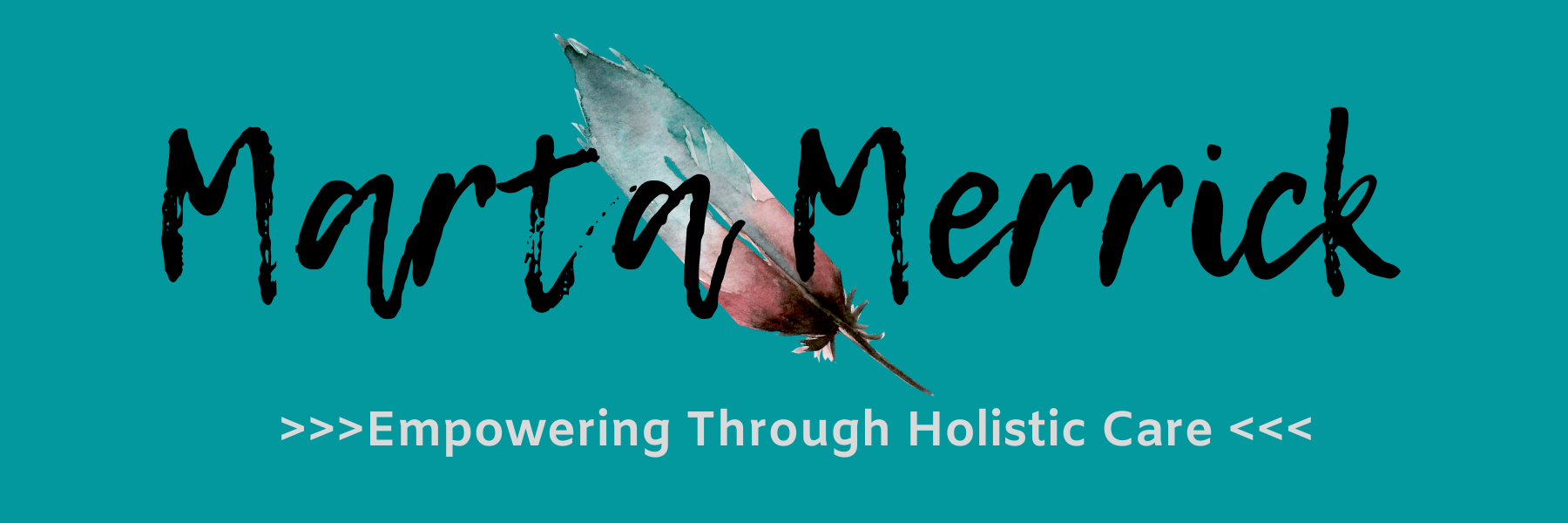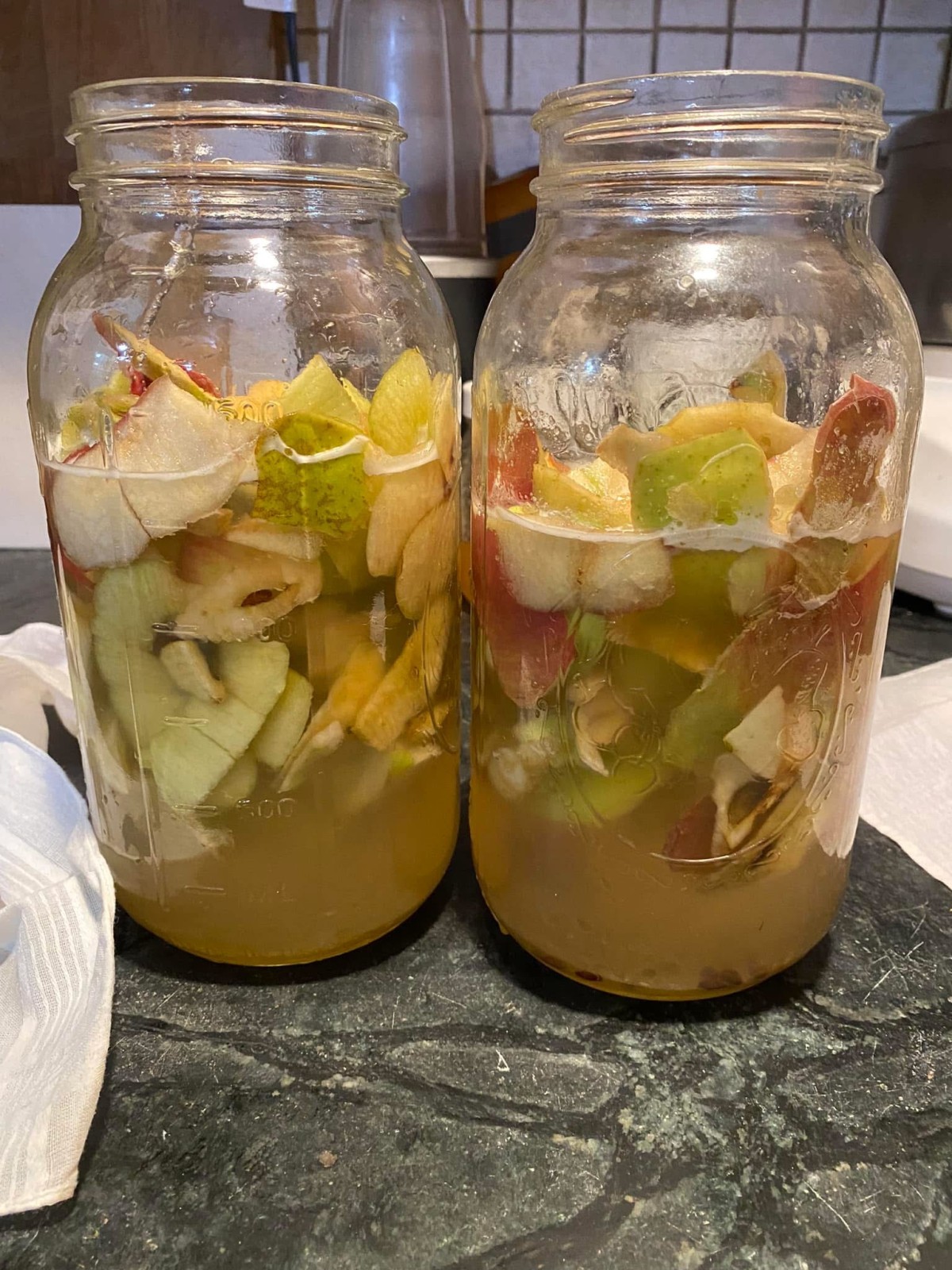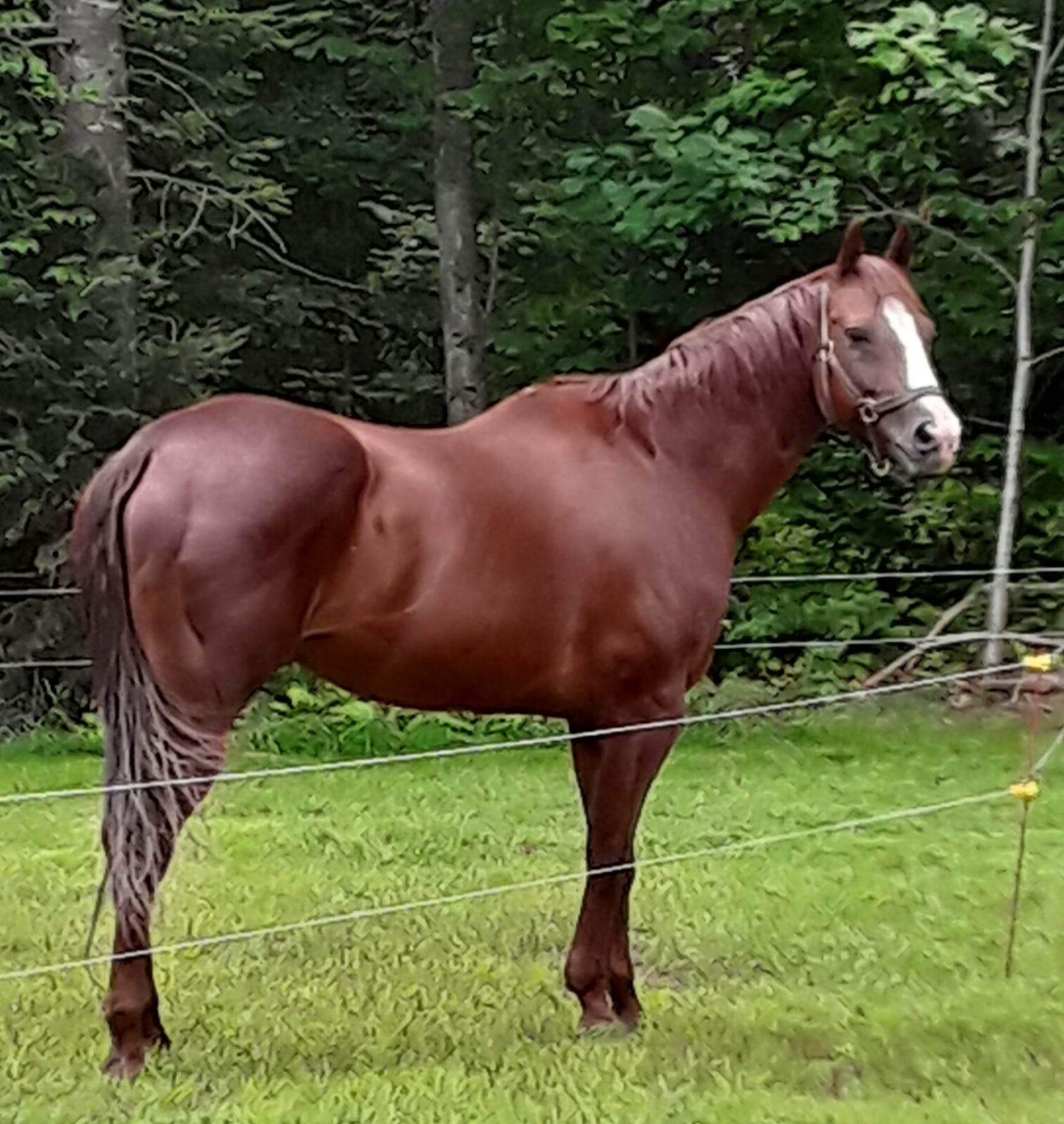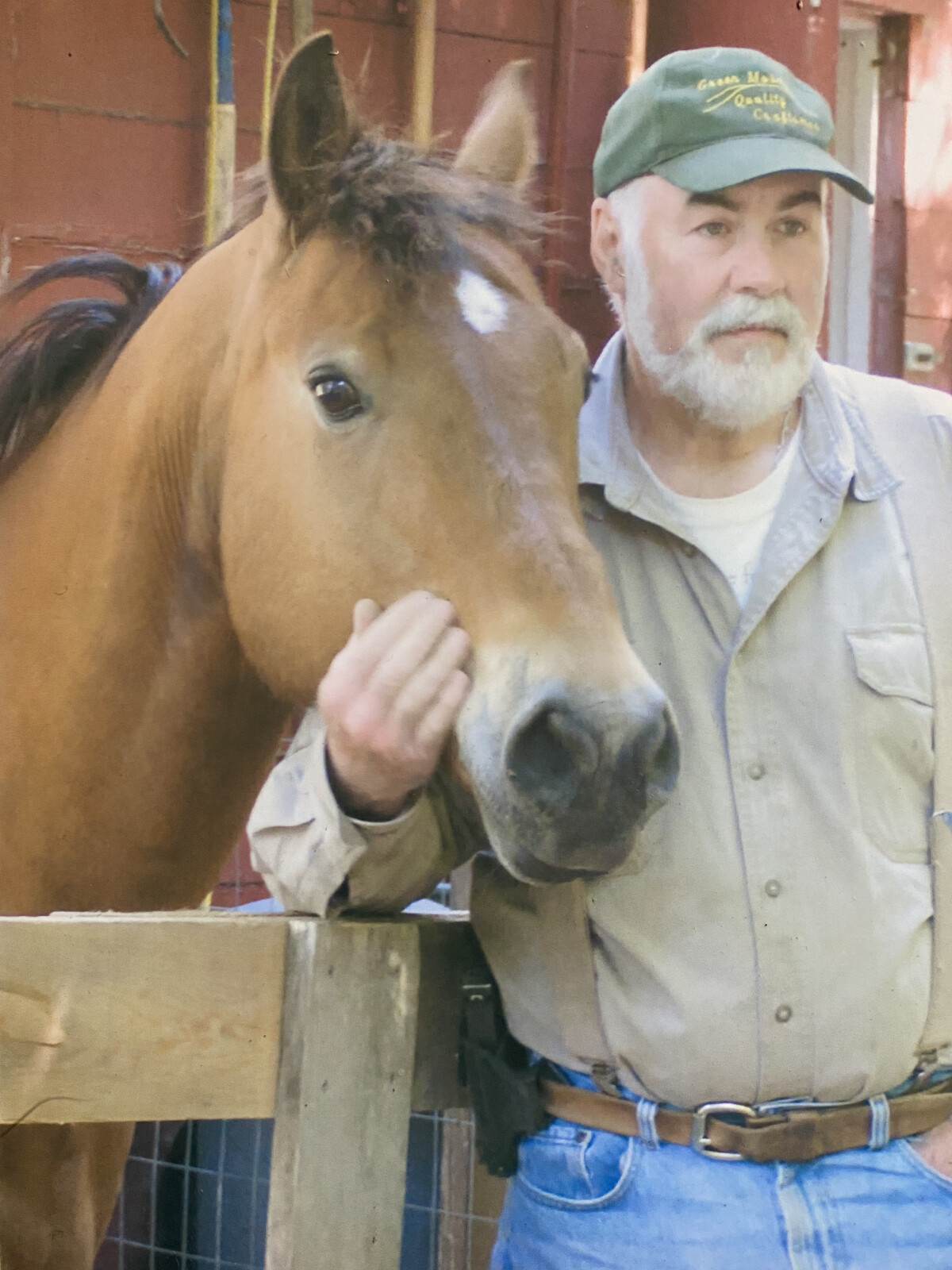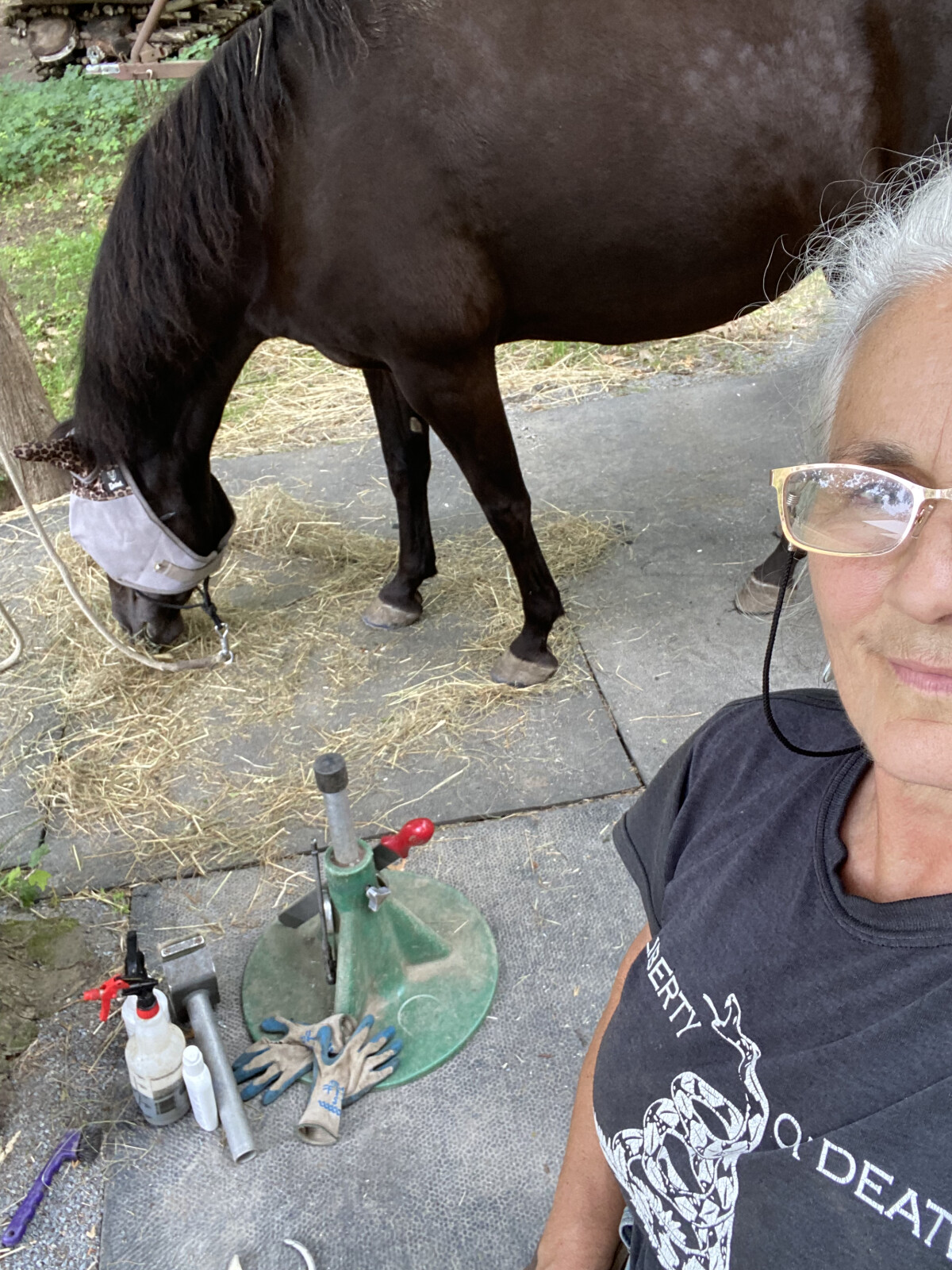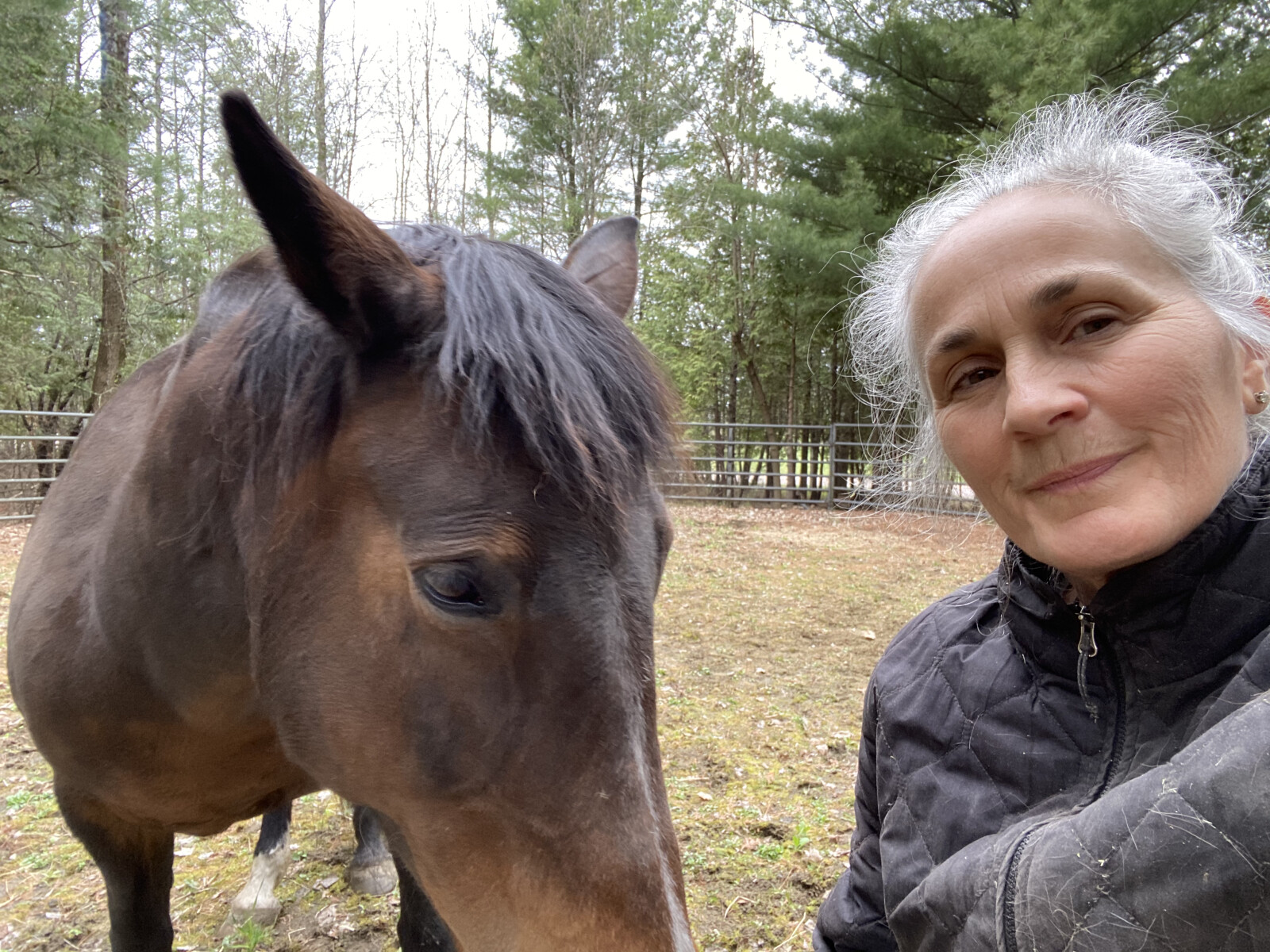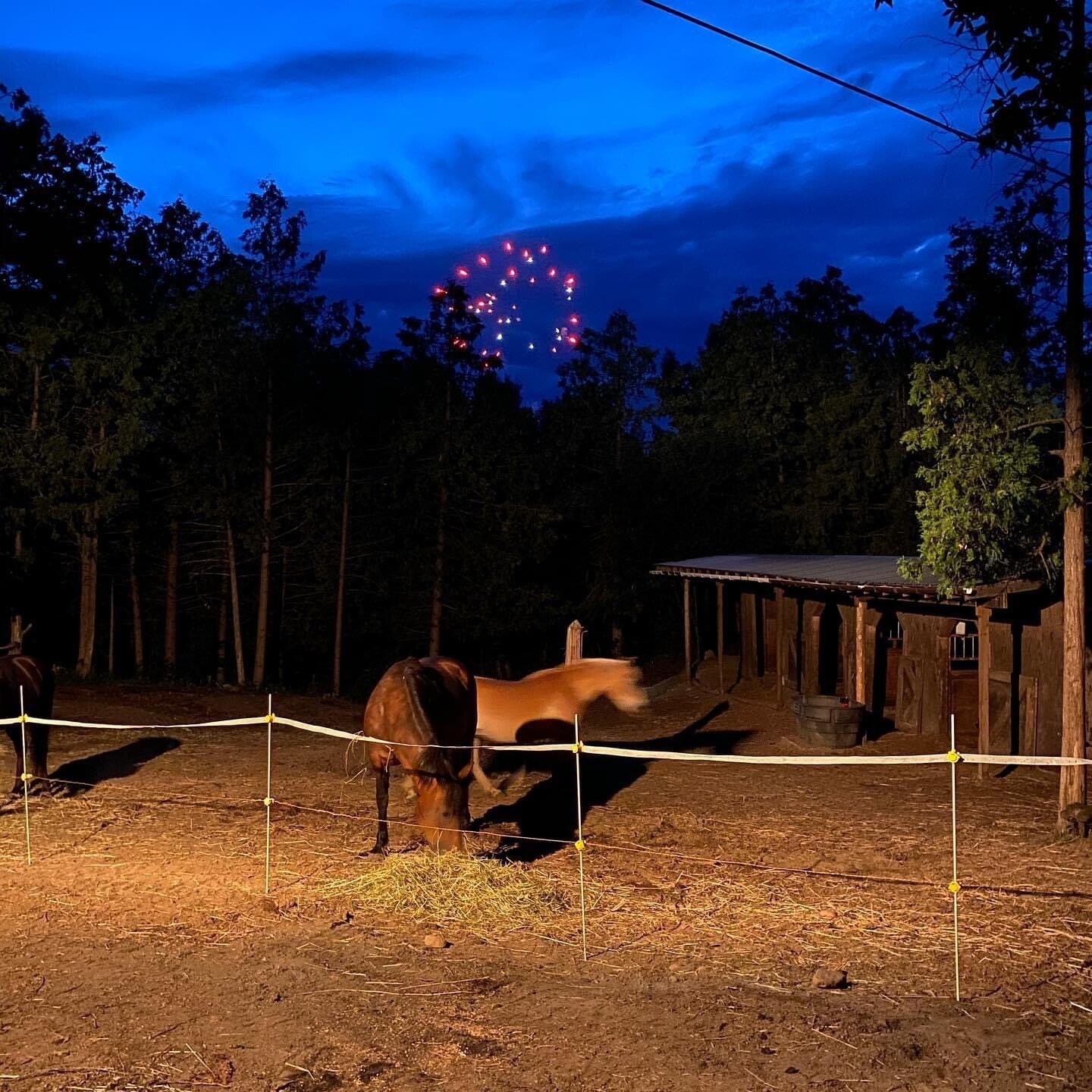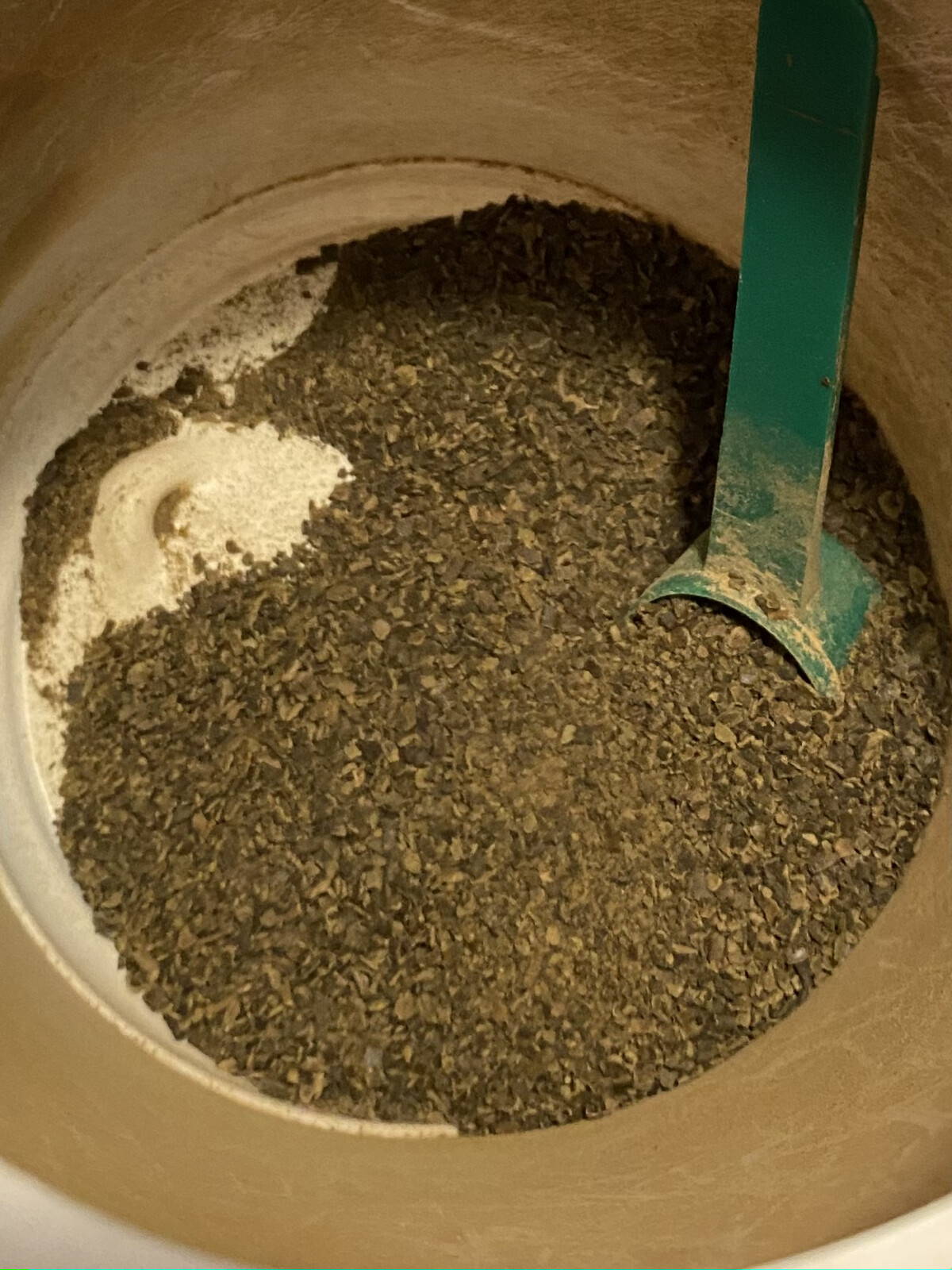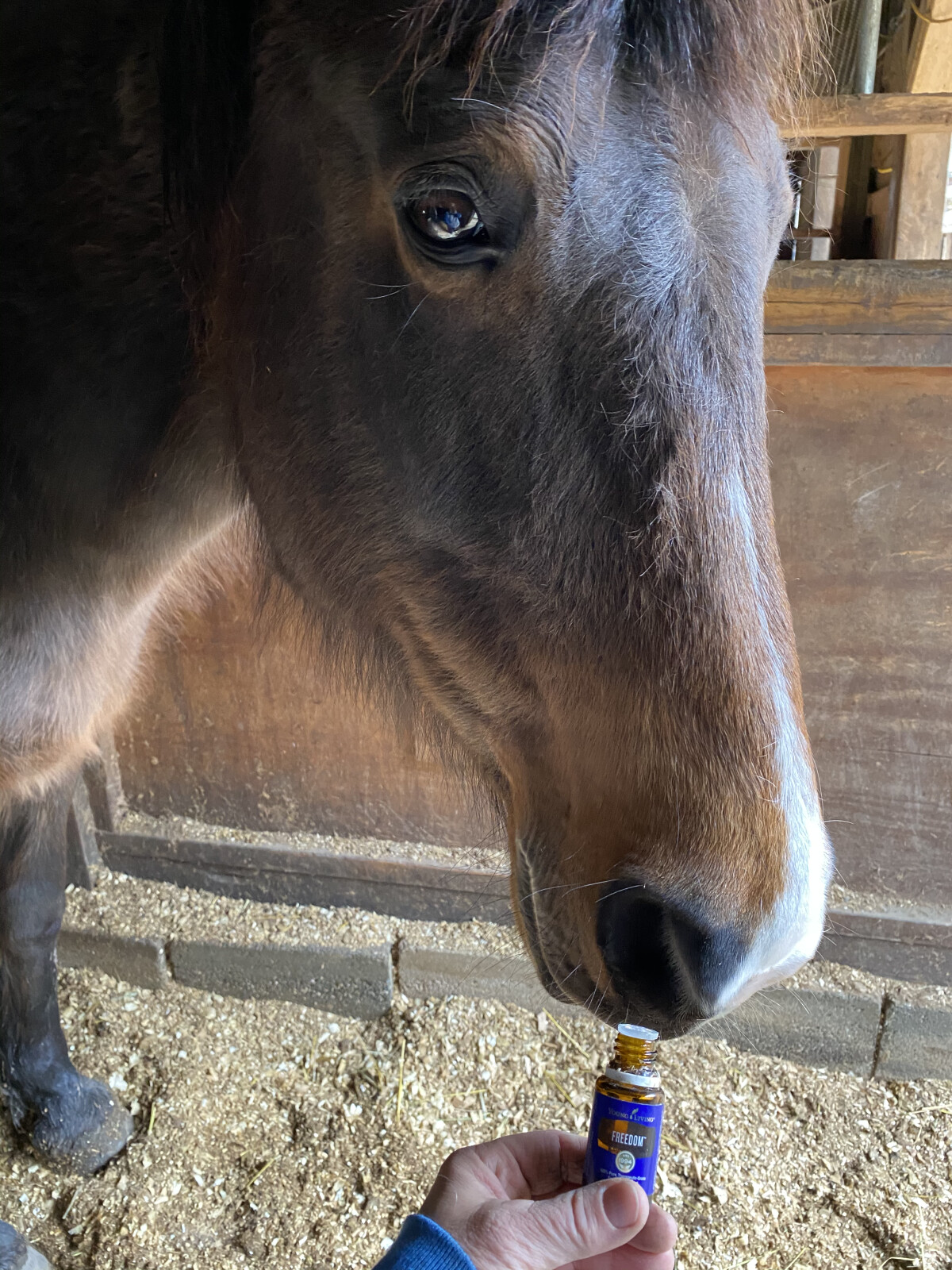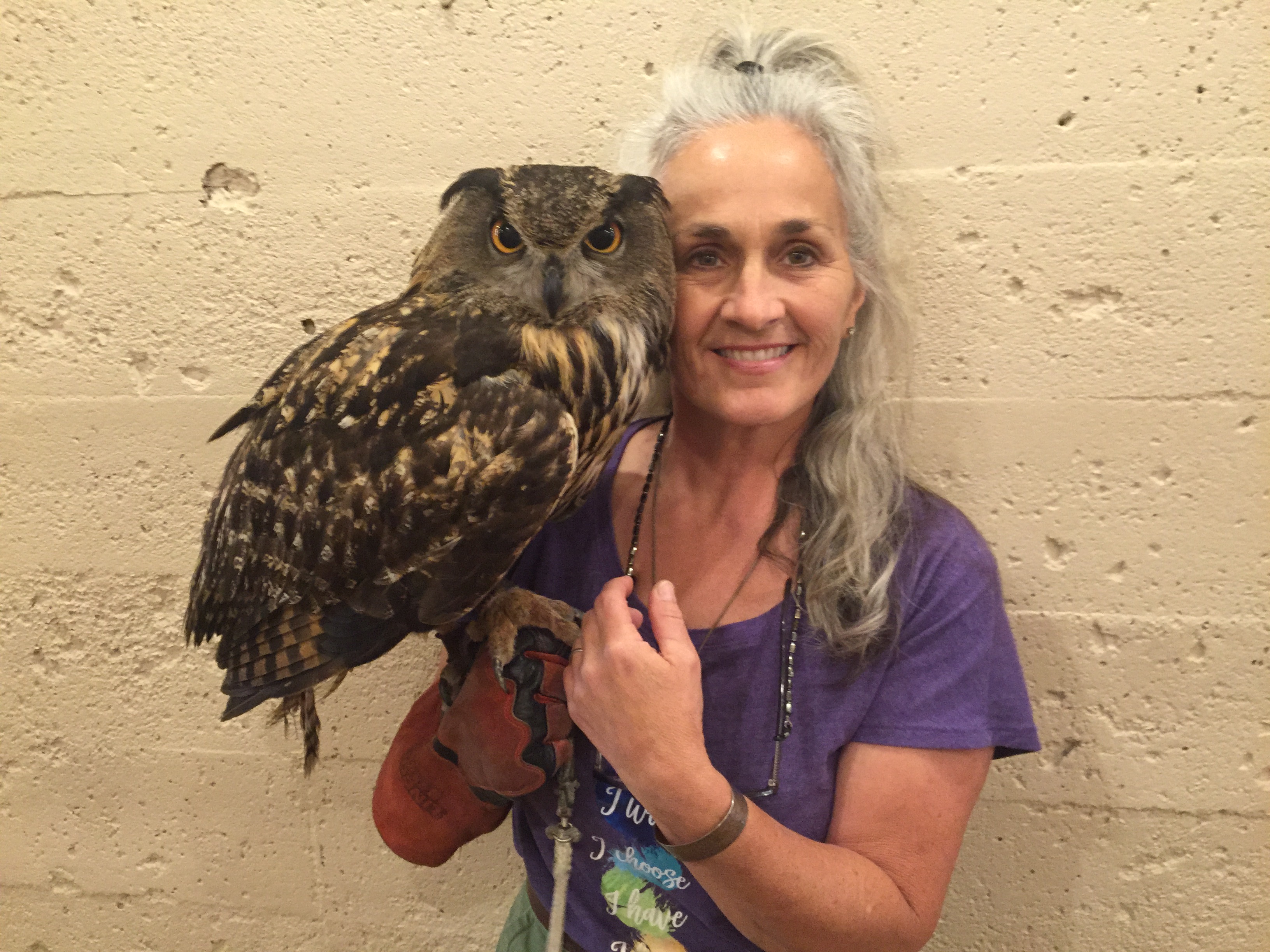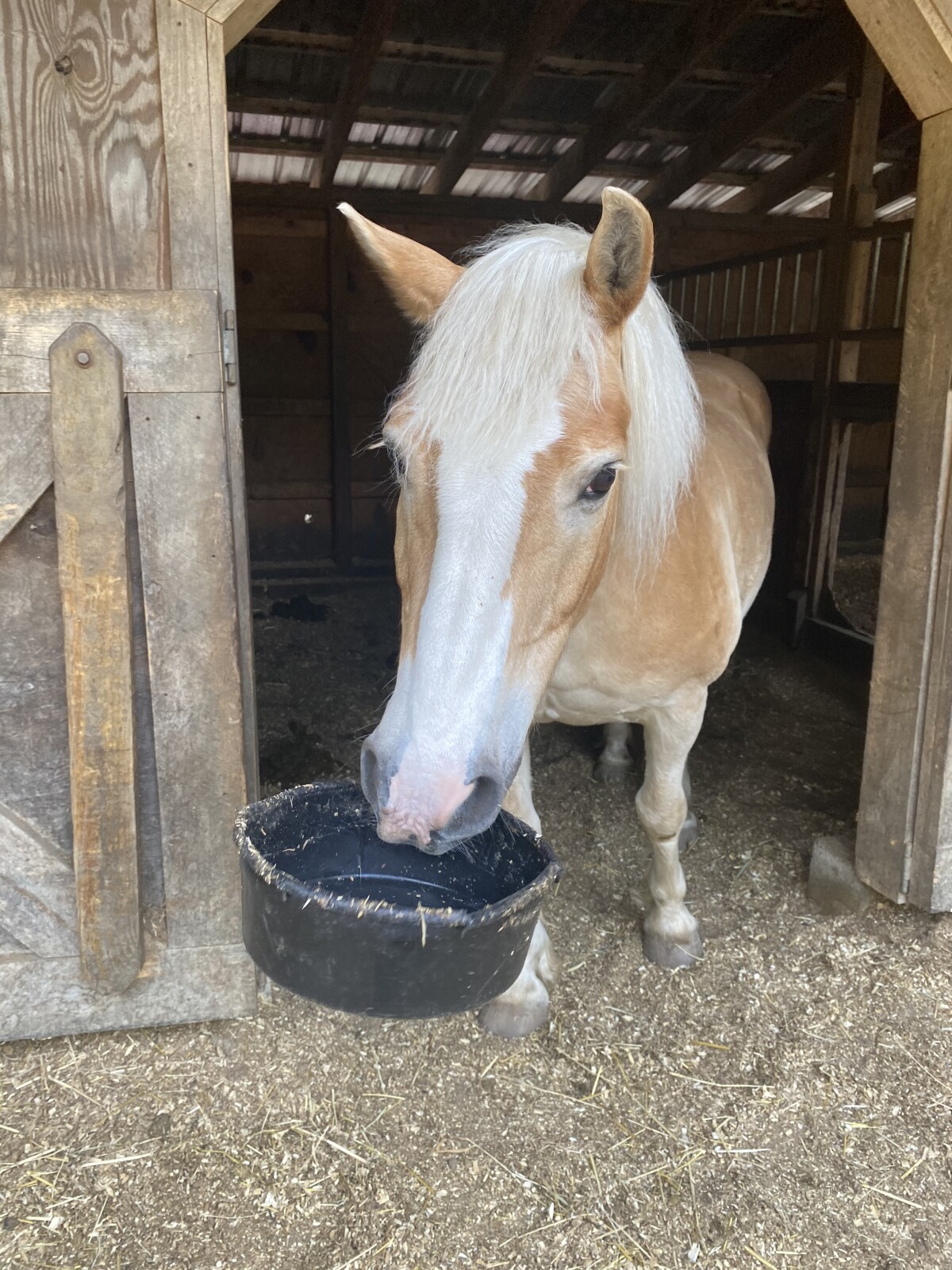
Horses are a herd animal meant to live and roam with their “family”. This offers safety, emotional comfort and a feeling of belonging within the “family”. When we put them in living situations that are very different from their instinctual norm, we are immediately setting them up for problems. How much, what and even when we feed our horses has a huge impact on their stress level, gut health and even their emotional well-being. At the heart of all dis-ease is stress in the body. There is no greater culprit than emotional stress for wreaking havoc in the body. Soothe the animal, set up their life as nature designed for them and release the stress…
Let’s look at how we keep our horses. Horses are built and wired to move and eat continually on a daily basis. In the wild, it is normal for a herd to cover around 25 miles in a day. They browse on a variety of grasses, tree bark and plants while moving over a variety of terrain that proves beneficial for their hooves as well as the rest of their being. When its rest time they hang as a group, with a few of the mares standing watch over the herd. The track system lends to this lifestyle, mimicking how horses live in the wild.
Does your horse’s daily routine look like this? If it does, congratulations to you! Your horses are likely ulcer free and happy in their herd! Getting horses out of the long days and nights in a stall and getting them moving with the herd will increase their feelings of safety and trust. It will allow them to tap into the energy of their herd dynamics and serve to settle them within their group, relieving stress.
Browsing for food! Allow your horse to move about to access their food. Standing in one spot to eat hour after hour does not help their gut or the rest of their body! Offering a variety of whole foods is your best bet for keeping your horses gut balance. Avoiding things like processed grains and instead substituting foods like flax, chia seeds, Timothy/alfalfa cubes will go a long way for providing the nutrients needed while avoiding the stomach upset.
Adding in enzymes like Allerzyme and Essentialzyme has been a game changer for one of my guys! Clearly his gut balance was off and he was acting like a grumpy old man. He is now back to his gregarious, silly self (that’s him in the photo)! Other items like pre and probiotics, Life 9, are beneficial to keeping the gut balanced and have a place in our horse care. There are also products like aloe vera juice or bentonite clay that can offer a soothing solution to the problem gut.
By incorporating some of the things I’ve talked about above, chances are your horse is already feeling better. If there are still troubles, checking in on their emotions by evaluating their energy centers is a helpful thing to do. When the solar plexus is blocked there is a connection with feelings of not belonging, fear of abandonment, defensiveness, feeling trapped, anxiety and even feeling tired. With this knowledge, you can utilize a selection of essential oils to support your horse emotionally. I have a great chart and mini course that outlines how to identify the emotions based on the body and suggested oils to use. Grab it HERE.
If you suspect your horse does have ulcers and would like to confirm that, there is a non-invasive test that can be done. It uses fresh fecal matter to check antibodies to detect two equine specific blood components. It's called Succeed. Positive results for this test confirm the presence and potentially location of inflammation, lesions and/or ulcers. It is necessary to use fecal material within 30 minutes of it leaving the body. Results show as quickly as 5 minutes but not longer than 15 minutes. It is only available to veterinarians, so contact your vet to access this product.
I would also incorporate Healing Touch For Animals techniques to help clear the energy. There are other holistic tools that can be used as well. Tools like red light therapy, PEMF and more!
Interested in learning more about some of these areas I’ve touched on? There’s loads of information in the Guides section of my group The Hearts of Horses; Empowering Through Holistic Care.
Join our community HERE and feel empowered as you care for your horses!
All the best,
Marta
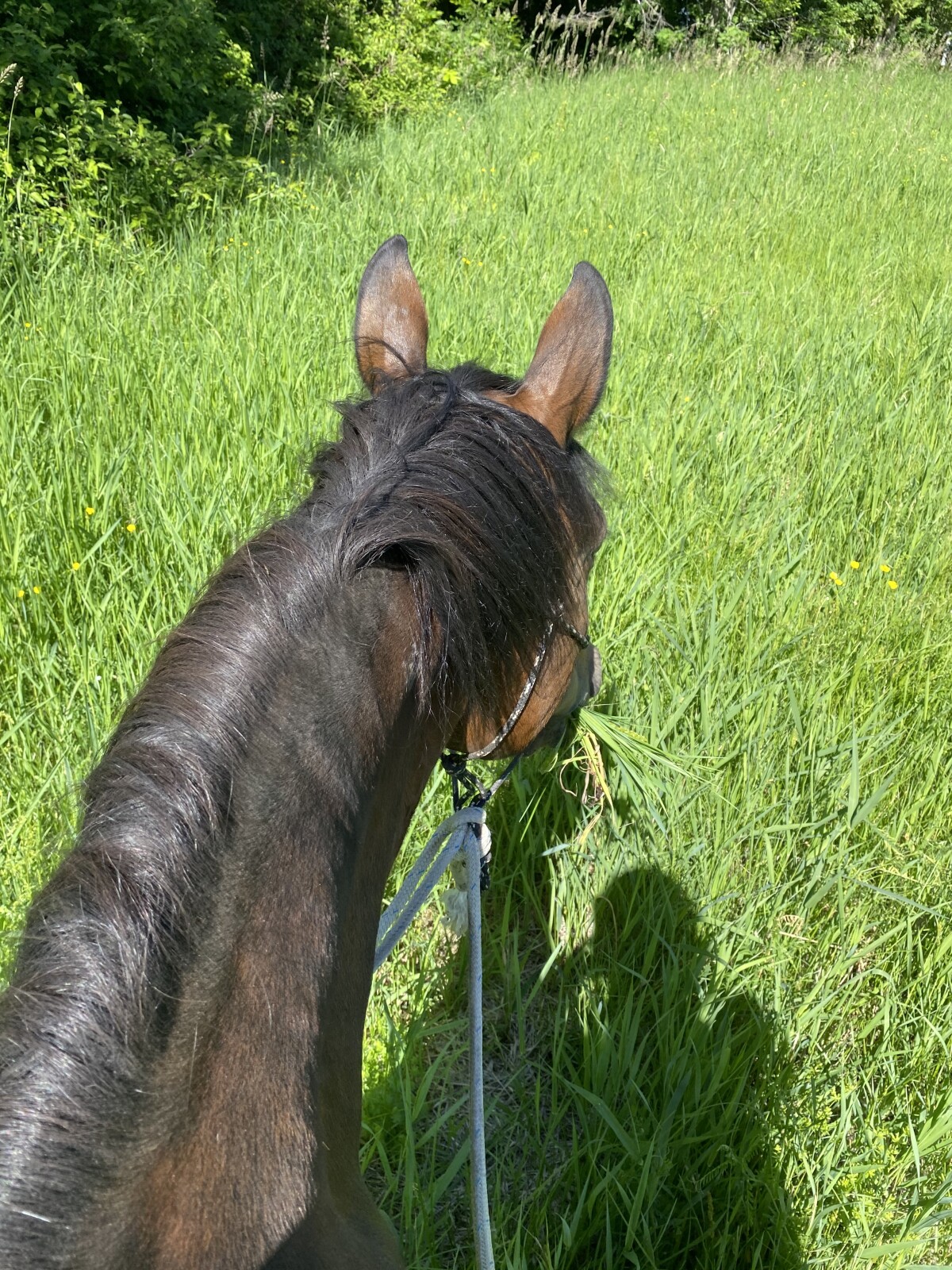
Early on, when I got started with horses, I learned traditional ways to care for them. This involved chemical fly sprays, ointments that contained potential carcinogens and other questionable chemicals in a variety of products including their food.
Along the way, as I was learning, I was drawn to more holistic ways of caring for my horses. Following my heart, with regard to these ways, has led me on a path of discovery, healing and much healthier horses!
When I first got Calli, every year she would get bit up by the little No-see-ums that come out in May at our wooded home. They would bite her on her underside and she would end up having a crusty line of gunk from her chin to her udders! Definitely gross and I'm sure uncomfortable for her.
Things started looking up when I started using a plant based cleaner on these areas of her body. The crusty stuff started disappearing and there was not as much of it covering her underside. I was super happy about that! I had been learning about these new holistic care options and part of that process was removing the products that had toxic chemicals in them. The fact that I was reducing the amount of toxins in her world was making a difference for her and helping to keep these bugs at bay.
Adding an essential oil to her daily feed was another thing I did. It served to improve her immune system. It is such a huge benefit at a very small price! Adding the oil along with the spray (which also helps to improve her immune system) really made a huge difference for this "seasonal" problem.
Another piece of this puzzle that was beneficial, because it removed toxins and sugar, was getting rid of the processed grains that we had been feeding. Processed grains have chemicals and toxins added to them along with a significant amount of sugar (which causes inflammation). All of our horses are on an anti-inflammatory diet. It is better for joints, over all wellness and, I believe, makes them less tasty to the bugs too!
As we are now into another May, I am happy to say that its been quite a few years since we've had to deal with the crusty underside! And there are few and far between reactions to bug bites now that we have addressed removing toxins and improved immune systems.
If you're interested in knowing what products I used, check out this brief video...
If you're interested in more holistic care information for your horses, join our community...
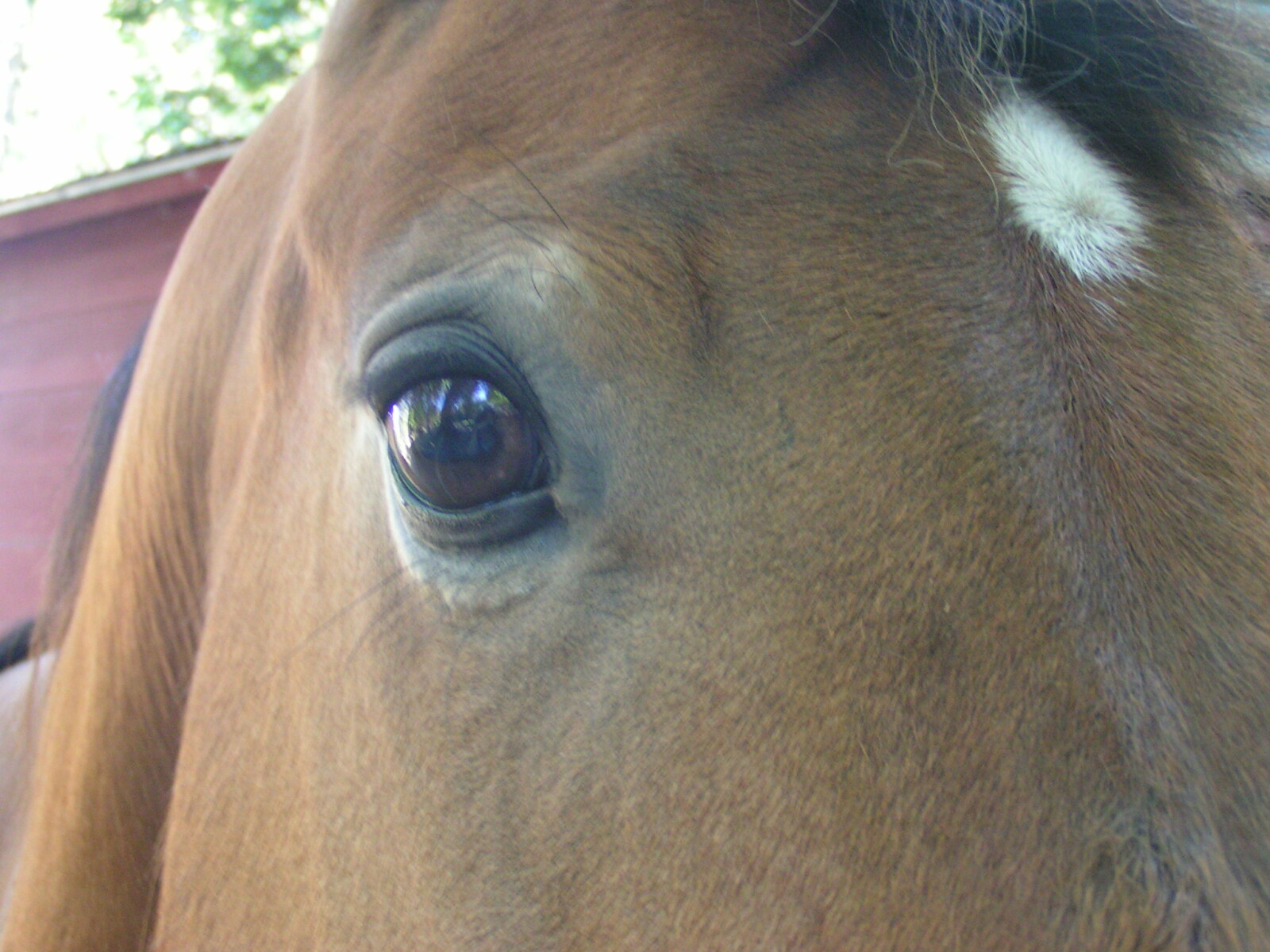
For many, spring and fall shots are a ritual. The change into these seasons prompts a call to your vet to come out and vaccinate your horses. Have you ever considered the effects on your horses’ health from this rigorous schedule? Do you pay attention to how your horses’ feel on the days following the shots? Is there a pattern of regular signs of discomfort every time? As your horses’ caregiver, these signs and patterns are so important to recognize!
Before you jump on the phone to schedule your horses’ spring shots, consider asking yourself these questions…
- Have my horses’ received shots regularly over the last few years? Did you know that vaccines stay active within the body for many years? When tested, an animal can show anti-bodies for as many as 15-20 years after the shot. This means that the animal is protected from the threat due to these anti-bodies. It has immunity!
There is a simple test called a TITER. This is a blood test that checks for anti-bodies. If your horses have the anti-bodies, then they are protected and do not need another shot. If they are given repeated shots, there is a build-up of adjuvants which are the additives in vaccines. These are heavy metals and other toxins that cause the harmful side effects. When the build-up becomes too much for the animal’s system, it may experience VACCINOSIS.
- Do my horses live at home, perhaps older, and rarely come in contact with other horses? This situation most likely eliminates the need for vaccinations. Providing plenty of good forage, balanced minerals, fresh water and movement will do more for preserving the health of your horses than anything!
- Do any of my horses have an existing health condition? It is NOT recommended to give a vaccine to an animal that is health compromised in any way. This includes horses prone to laminitis, any metabolic disorders, fever, etc.
One experience I recall, was helping a friend to learn to trim her horses. I’d visit periodically to check in and see the progress. Through our conversation about her mini, I suggested she consider skipping the vaccines that spring. In the past, he had suffered from laminitis after every vaccine. This time for the first time, without the shots, there was no episode of laminitis in the spring!
Think back to the patterns that have occurred for your horses. Are there reactions at the shot location? Do any of your horses have a fever after the shot? Are there movement changes? Or behavior changes? These are all red flags and reasons to reconsider giving your horses their spring (or fall) shots. Instead, consider the TITER test mentioned above.
For those who are required to have shots for a boarding situation, help your horses by giving them a Rain Drop session. This is a technique utilizing Young Living Essential Oils and application techniques (there’s more information on this technique in The Hearts Of Horses; Empowering Through Holistic Care Facebook group). This application helps to clear the body of the heavy metals and other toxins and allows the body to heal itself.
If you’d like to hear more, from a holistic veterinarian, I had a conversation with Dr. Barb Fox DVM on this topic. Visit the Guide Section in The Hearts of Horses; Empowering Through Holistic Care to hear our conversation.

Goin’ Bare…It’s Easier Than You Think For Your Horse To Go Barefoot!
There are, however, some key lifestyle factors that are critical to include in your horse’s life in order for the transition to be successful! First, the hooves need proper nutrients to grow in healthy, strong and well-connected, there needs to be stimulation through movement over varied terrain, you’ll need a regular trimming schedule either by a professional or by learning to trim your own horses and lastly, there will be a transition period where the hooves will need protection with padded boots.
Let’s look at nutrition first. It’s a great place to start to grow healthy hooves. One of the most detrimental ingredients that ruins more feet… is sugar! There are hidden sugars in so much of what is given to our horses. Everything from grain to supplements to treats. It is in virtually every item that goes into your horses mouth, including grass and hay! Understanding and controlling the sugar in your horses diet is going to be a major step in going barefoot with your horses. One of the easiest ways to do this is put your horse on an anti-inflammatory diet. This means you primarily feed grass hay and provide minerals needed that are not accounted for in the hay. If other feeds are needed look at whole foods like flax, chia or hemp seeds that add beneficial Omega-3’s. The important thing is to avoid processed grains and ingredients like corn, soy and molasses. There is also a supplement that I started giving mine for joint health yet realized how great it was for creating healthy, strong feet! It contains the building blocks for good skin, hair and hoof growth. You can read about it here. And if you'd like more information on the basic nutrition for your horse's needs, check out the guide I made up here.
Next you’ll want to make sure you’re encouraging your horses to move in their home environment. The hoof is a blood pumping mechanism who’s purpose is to expand and contract to pump blood back through the rest of the body. The simple act of spreading hay into multiple piles in their environment will encourage them to move and eat. Putting up a series of hay bag stations around their space will offer the same benefit as well. By incorporating this simple feature you will be encouraging the growth of healthier, stronger hooves as well as supporting a healthy digestive system! Include, in some high travel areas, abrasive terrain to help stimulate and condition the foot to grow a more dense sole and create go-anywhere hooves!
Maintaining a regular trimming cycle for your horse’s rate of growth is crucial to going barefoot. The cycle can vary depending upon your horse’s nutrition and even the amount of wear their hooves get. In some environments horses can self- maintain their hooves! For many though setting up a 4-6 week schedule to maintain a healthy foot is a good guideline. Finding a good barefoot trimmer is helpful or if you are so inclined, you can learn to do the trimming for yourself. With the help of your trimmer checking in on you, it is possible for you to learn to use a rasp and knife to maintain your horse’s hoof walls and bars. Of course there is some learning that needs to happen first and practice with guidance. Taking an active role with your trimmer right now can set you on that path. Asking questions, paying attention at your trimming sessions and in general being curious about your horse’s feet. If trimming your own horses is something you’d like to pursue, I have a go at your own pace course along with a FB support group for any help you might need. Get the course here.
Lastly, your horse will most likely need some sort of padded hoof boot protection for a period of time. This time will vary for each horse. The factors I talked about above and how well you have incorporated them into your horse’s lifestyle will have a great impact on this. Having been an Easy Care dealer when I had my practice, I am partial to them. However, the important thing here is finding a boot that fits and will stay on well while your horse is out with his herd. Boots need to be taken off daily to give the foot time to “breathe” and to check for rub spots or any other possible discomfort. Utilizing boots to protect your horses hoof and reduce any potential pain in this process will significantly impact their transition time.
Are you interested in learning more about transitioning your horse out of shoes, nutrition, booting or living a healthy, holistic lifestyle? Maybe you'd like to check out a free workshop on hooves? Its all in here... The Hearts Of Horses; Empowering Through Holistic Care
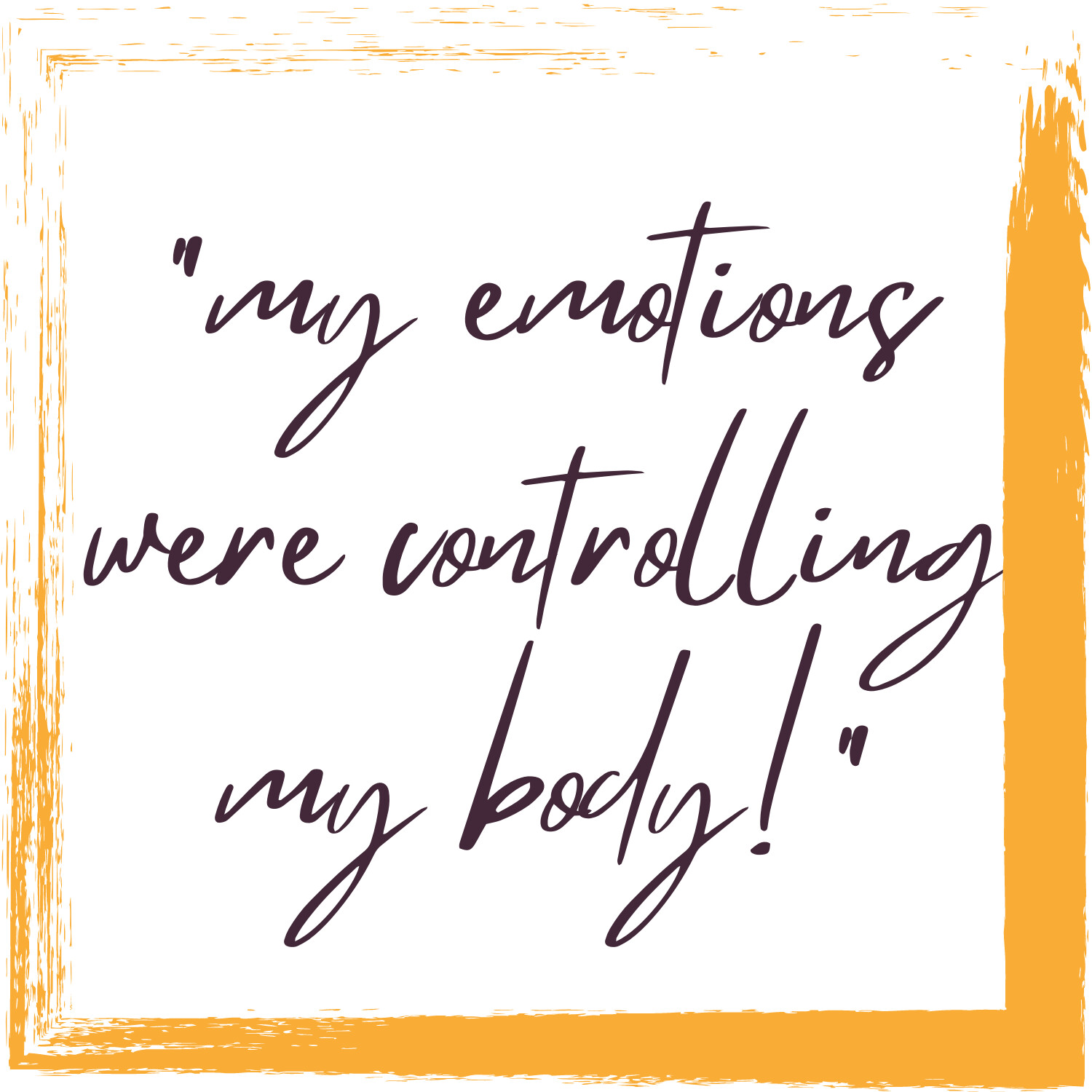
As I look back over the years, I realize I have had experiences with some pretty mysterious origins. There have been accidents, failures, even chronic issues in my body that could not be explained. What I finally figured out was, my emotions were controlling my body and my world! Let me share with you a couple of memorable experiences I had, that were very puzzling, but have shown me just how connected our emotions are to our bodies and our everyday experiences!
My first experience that showed me the power of our emotions on our physical world was the sale, or rather the lack of, of my house. It was my first house that I had purchased soon after finishing college. I lived there for about 17 years. After getting married, and not needing two homes, we put a lot of work into the house and listed it on the market. The home was lovely with many custom, rustic features added. But Not-One-Person looked at the house for the multiple years we had it on the market! I even did the “ bury the St Joseph statue” ritual in hopes of making something happen! What I came to realize was that I had not been ready to let go of the house. Emotionally, vibrationally, I was holding onto it. This realization came when there was a shift in the way I felt about the house and property. As soon as that emotional shift happened, we had multiple people looking at and making offers on the house, after so many years of trying to sell it!
Another powerful experience happened during my transition from trimming horses to educating about using essential oils with animals. My excitement about the oils was growing while my interest in trimming for others was declining. But I kept on trimming. Soon my right hand thumb started to freeze. Like it didn’t bend! That meant I was having trouble using my nippers. At this point, I hadn’t made any connection with the way I was feeling about wanting to pursue a new area of interest and my thumb. All I knew is that I was just frustrated and angry! I decided I needed to stop trimming. The very day I declared I would stop and pursue my new passion, my thumb returned to normal use! Crazy right?! Well I discovered through doing some research that the hands are governed by the heart energy center. Some of the feelings that reside here are confinement, the inability to cope, injury, distress. I think all of these were applicable to my situation at the time. It is easy to see now… that once I followed my heart’s desire, the physical issue I was having disappeared and all was well!
Over the past few years, as I have been exploring the path of gaining better connection and understanding with my horse Calli, I have come into contact with ideas that have expanded not only my mind but my everyday life with my animals! Much of this particular subject about emotions, for me, started with a collection of CD’s called The Law of Attraction by Esther and Jerry Hicks. The idea that we could create the life we choose by the thoughts we think and the emotions we attach to those thoughts was both thrilling and motivating! It lit a fire in me to learn more. It is THIS feeling, this excitement and exuberance that manifests and tells us we are on the path to big and wonderful things! I was lead to other resources such as, Releasing Emotional Patterns With Essential Oils by Carolyn Mein. This book really solidified the idea that our emotions reside, vibrationally, within the different energy centers of our body.
As I was doing my horse workshops, helping people to understand how to “read” what their horses might be feeling and how it affects their body, I found that I needed something to refer to that had the body systems along with the emotions and suggestions for essential oils. I couldn’t find anything like that, so I created one! It’s a downloadable pdf called Connecting Emotions, Energy Centers and Essential Oils and is included in a mini course with videos explaining each section of the ebook. It includes a chart with the emotions, body systems and essential oils for each energy center, graphics of the horse, dog and human showing energy center location, an explanation of how and why to use this resource, tips and techniques, an observation and notes template and additional resources. There are also videos on how to use a pendulum as well as the application of the Feelings Kit oils to a horse.
Knowing the extent to which emotions affect our bodies, for us and our animals, I think it is so worth the time to pay attention and explore this subject! I know for myself, I now choose my thoughts and emotions to create positive experiences and manifest life goals. When caring for my animals, I now have greater insight into their feelings and can provide better support for their health and well- being.
If you’re looking to know more about emotions and the body, and specifically horse related topics, join my community The Hearts of Horses; Empowering Through Holistic Care.
All the best,
Marta
